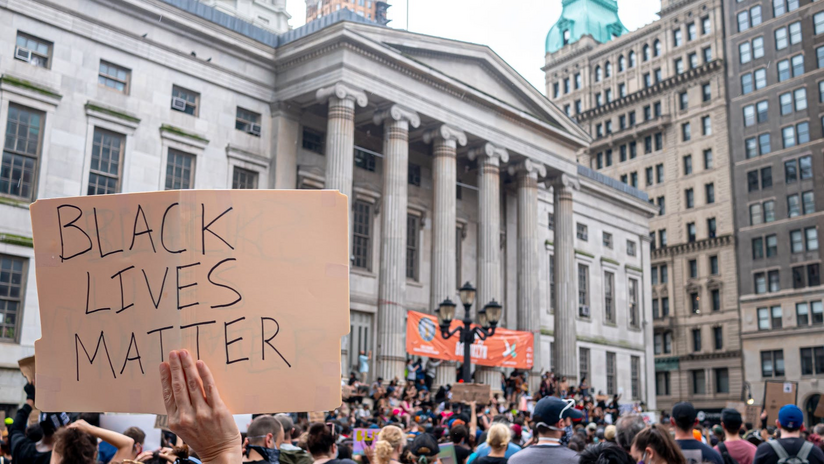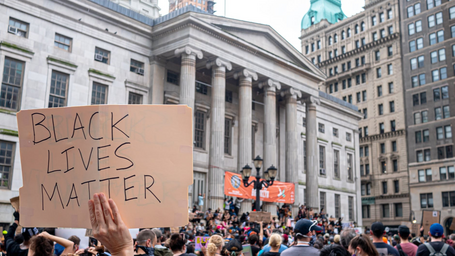In the UK, October is Black History Month, 31 days dedicated to celebrating the rich culture and history of Black people both in Africa and in the diaspora. As it is based in the UK, much of Black History Month centers around the achievements and triumphs of Black people in the UK. However, it is also a time to educate each other on the racism, microaggressions, and systemic disadvantages Black people face worldwide.
In May, after the murder of George Floyd, protests against police brutality erupted in North America and across the globe. This resurgence of the Black Lives Matter movement (BLM) brought the struggles of Black people to the forefront of society’s minds. Ignorance or intentionally turning a blind eye were no longer acceptable. Unfortunately, although protests continue to advocate for Black lives, conversation surrounding BLM among the general population has slowed or ceased. Black History Month was a brief reminder of the progress we have yet to make, but one month of activism is not enough. It is essential that all of us learn how to engage in sustainable activism. Here are the best ways to build long term investment in the Black Lives Matter movement:
1. Educate Yourself
The first step in sustainable activism is educating yourself. This can come from a variety of sources. My favourite source is books. Here are my recommendations:
-
Why I’m No Longer Talking to White People About Race by Reni Eddo-Lodge
Eddo-Lodge’s debut novel was born out of her blog post with the same title. It explores the emotional disconnect white people have with racism, and how difficult that makes it for Black people to recount their experiences in Britain. A must read for Black people and allies, it is a powerful reminder that privilege is not just tangible advantages. Privilege is going through your day without thinking about race at all.
Favourite Quote: “White privilege is the fact that if you’re white, your race will almost certainly positively impact your life’s trajectory in some way. And you probably won’t even notice it.”
-
Homegoing by Yaa Gyasi
Homegoing follows the story of two half sisters, Effia and Esi, in modern day Ghana. One marries a wealthy British official involved in the Atlantic Slave Trade, while the other is sold into slavery. The book subsequently follows Effia and Esi’s descendants through eight generations until the present day. The book tackles the involvement of Africans in the enslavement of their own people, as well as the heavy hand of the British in inciting wars meant to produce slaves. Beyond that, Homegoing chronicles the evolution of slavery in America and colonisation in Africa. If you do not understand the long lasting impact of the British Empire and the Atlantic Slave Trade on Black people, this is an essential read.
Favorite Quote: “They would just trade one type of shackles for another, trade physical ones that wrapped around wrists and ankles for the invisible ones that wrapped around the mind.”
-
Taking Up Space: The Black Girl’s Manifesto for Change by Chelsea Kwakye and Ore Ogunbiyi
Chelsea Kwakye and Ore Ogunbiyi are Cambridge University graduates who experienced being one of few black people, let alone black women, in an elite and predominantly white institution. The book includes conversations with past and present black female university students. They discuss candidly what it means to to make yourself seen and heard when nobody else looks like you. It is empowering and validating for black women, and eye opening for everyone else.
Favorite Quote: “As a minority in a predominantly white space, to take up space is itself an act of resistance.”
2. Promote Diversity and Inclusion in Professional Settings
A central goal of activism is to be an effective ally to Black people. One of the most important places to be an ally is at university, where Black people are often outnumbered.
Black students made up 6.8% of students in higher education in the 2018-2019 academic year. This lack of diversity is due to a lot of factors, and the comparatively small Black population of the UK is certainly one. But the fact remains that Black students are outnumbered. If you see a Black student or staff member being targeted, it is vital that you step up to defend and protect them. Additionally, if someone says something racist, even if there are no Black people around, it is essential that you denounce their words.
Although King’s College London is known for its racial and ethnic diversity, I have found myself being the only black person in the room on many occasions. It is so important to advocate for Black people, even if you don’t know them.
3. Attend Protests (If Possible)
A simple but effective way to support the BLM movement is to attend protests. Notably, there have been recent protests calling for the end of the Special Anti-Robbery Squad (SARS) in Nigeria, a group that has been accused of extrajudicial killings, robbery, kidnapping, and other abuses. On October 11th SARS was officially disbanded. However, it has simply been given a new name, the Special Weapons and Tactics Units. This allows the same police officers accused of abuses to continue working for the government. After peaceful protesters were murdered at the Lekki Toll Gate in Lagos, protests have reignited with a new fury. The King’s African Caribbean Society publicises protests happening in London on their social media pages. The Instagram page @endsarsuk also posts frequently about upcoming protests around England. Given the COVID-19 pandemic, it is perfectly understandable if you can’t attend a protest at the moment, or simply don’t feel comfortable doing so. A way to still be involved is to spread the word about protests occurring. Which brings me to my next point.
4. Utilize Social Media
When lockdown restricted many to their homes this past Spring and Summer, social media activism surged. The practice of posting and reposting flashy infographics and short videos became commonplace. While this form of activism has been criticised, and referred to as ‘slacktivism’, social media can be a powerful tool for change. Social media posts can reach hundreds or thousands of people in less than 24 hours, and there is so much information regarding the BLM movement that is worth that attention. Additionally, those flashy infographics can provide a starting place for more nuanced research. However, there are a few things to consider when engaging in social media activism:
-
Check the sources for everything you post or repost. When we repost infographics with seemingly true statistics, it’s tempting to press ‘post’ without fact checking them. Usually, a quick google search will do the trick. If you can’t find anything to corroborate the information you want to post or repost, it’s best to find something else. False information is incredibly harmful to the BLM movement.
-
Make sure statistics are put into context. Statistics may seem objective; they are factual numbers after all. But when those numbers represent real people and situations, it is vital you are investigating the context behind them. Is part of the story being left out?
-
Don’t post videos of Black people being murdered. Often referred to as ‘trauma porn’, videos of Black people being killed are posted to shock non Black people into caring about BLM. However, this content can be harmful to Black people, and insulting. You shouldn’t have to watch someone die to empathise with the fact that they have died.
And there you have it. My top tips for extending your BLM activism past one month. Being an activist and ally can seem daunting, but it doesn’t need to be. You don’t have to do every one of these things daily to be effective, and it’s totally acceptable to take breaks when you feel overwhelmed. I hope this list helps you with your activism, and you find out how to make sustained activism work for you.



